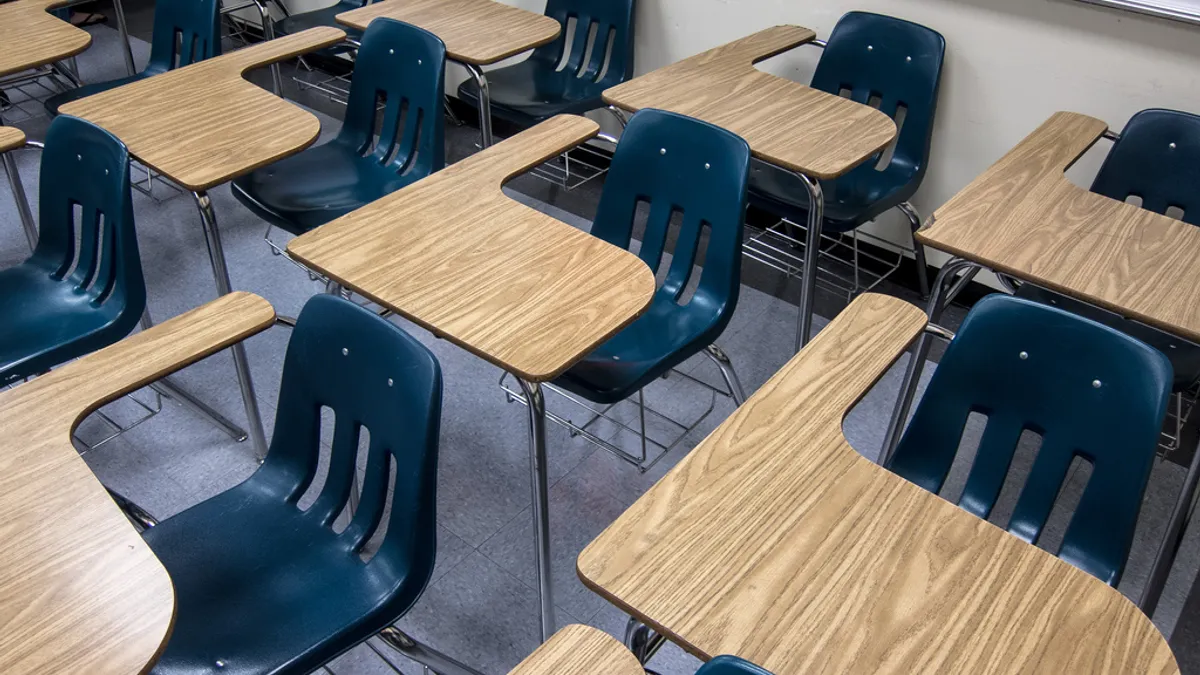Dive Brief:
- Scholastic Education surveyed 4,700 teachers and principals who universally agree equity is an important priority for educators, and its report details barriers to achieving true equity in schools — including those that come from home, those in school and those that relate to funding.
- According to eSchool News, 87% of principals in schools across the socioeconomic spectrum identified barriers that start at home, including family or personal crises, a need for mental health services, poverty, hunger, healthcare needs and a lack of internet or books at home.
- Access to specialists who can address social-emotional needs, arts and foreign language programming, high-quality instructional materials and reasonable class sizes are all a greater problem in high-poverty schools, where teacher retention is another barrier and principals spend an average of $1,014 of their own money to fill funding gaps.
Dive Insight:
Educators recognize the value in sending more resources to higher-needs students and schools. Many state lawmakers, however, have bristled at this focus on equity rather than equality, especially if it means redistributing a finite amount of money to better serve high-risk students. Connecticut is one of the states currently considering a court-ordered overhaul of its funding formula and a sticking point is whether representatives of wealthier districts will vote in favor of taking away money from their schools.
The “supplement-not-supplant” provision of the Every Student Succeeds Act has also garnered widespread opposition, including among teachers unions and administrators, even though its aim is to guarantee high-poverty schools do not get less money than their low-poverty counterparts. No matter what happens with this provision, state report cards will soon reveal the per-pupil spending disparities from school to school within districts.






 Dive Awards
Dive Awards





